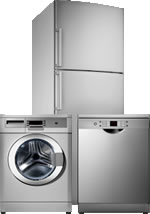How to Check the Drain ValveDishwashers either have a single direction motor or a reversing motor. Only those with a single direction motor have a drain valve. Models with a reversing motor, pump the water out of the dishwasher when the motor runs in the reverse direction. If your motor has two or three wires, it is a single direction motor. If the motor has four wires, it is a reversing motor and you can skip this article. Caution: Please read our safety information before attempting any testing or repairs.
To access the drain valve remove the lower panel located beneath the door. The panel is usually held in place with two screws either above or below the panel. It may be necessary to first open the door to the dishwasher to reach the screws over the panel, then close the door to remove the panel. The drain valve is typically near the motor although it can be located elsewhere. Look for a water hose running from the motor or underside of the tub. The hose should lead to the drain valve. The valve consists of the the gate arm mechanism and a solenoid (also called a coil). The gate arm allows the water to flow out of the dishwasher's tub through the drain valve. You should be able to move the gate arm up and down easily and smoothly. The gate arm also has two springs attached to it. If either of the springs is missing or damaged, they should be replaced. The gate arm mechanism is engaged by the drain valve solenoid. The solenoid is connected by two wires. Label the wire placement on the solenoid before disconnecting the wires. The wires are connected with slip on connectors. Firmly pull the connector off of the solenoid's terminals (do not pull on the wire). You may need to use a pair of needle-nose pliers to remove the connectors. Inspect the connectors and the terminals for corrosion. If the connectors are corroded they should be replaced. Test the solenoid for resistance using a multitester. Set the multitester to the ohms setting X1. Place a probe on each terminal. The multitester should change from a reading of infinity to roughly 40 ohms when the probes touch the terminals. If the reading is infinity or substantially different from 40 ohms, the solenoid should be replaced. |
 |
|




